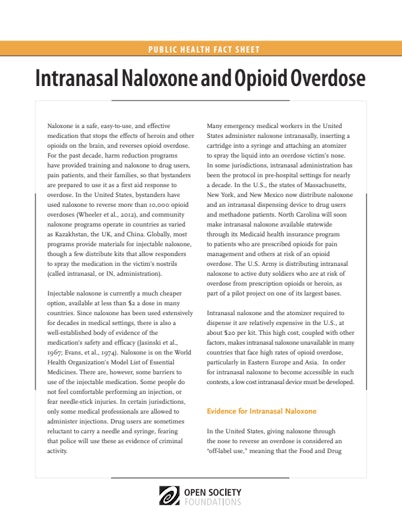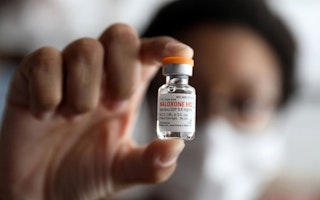A Cheap, Safe Way to Prevent Thousands of Overdose Deaths
By Chris Ford & Sebastian Saville
What do we do with a medicine that prevents certain death for people with a particular condition—and is safe, cheap, and easy to administer?
- Immediately make it accessible to those who can administer it when such a life-or-death situation arises.
- Make it available to no one except doctors and emergency room workers.
- Endlessly debate the particulars of how and when it should be widely introduced.
If you picked number one, that would seem to be a reasonable choice. Unfortunately, it would also be incorrect. With few exceptions, answers two or three apply in the vast majority of the world when it comes to the medicine naloxone.
Overdose remains a leading cause of death among people who use drugs, particularly those who inject. Increasing the availability and accessibility of naloxone would reduce these deaths overnight.
Naloxone is an effective opioid antagonist used to reverse the effects of opioid overdose. On a global scale, however, exactly how and where naloxone is used remains unclear. International Doctors for Healthier Drug Policies (IDHDP) is seeking to learn why this is and what can be done to change it.
Some form of community-based distribution programs for naloxone exist in over a dozen countries. But the quality of data pertaining to how naloxone is used is highly variable. Enhancing our knowledge about the use of naloxone will help us to better reap its benefits.
What we do know is that the availability of naloxone is growing in several countries. Scotland implemented a national program in 2010, and outcomes there have demonstrated its effectiveness in reducing drug overdose deaths. In China, it is available in an increasing number of hospitals. Canada and Estonia have pioneered programs on take-home naloxone.
And in the United States, policymakers called for greater availability and accessibility of naloxone after opioid overdose deaths more than tripled between 2000 and 2010. In some states, distribution expanded from emergency rooms, paramedic services, and needle-exchange programs to police stations. In Quincy, Massachusetts, all police began carrying naloxone [PDF] in 2010, leading to a 70 percent decrease in overdose deaths.
Last November, guidelines from the World Health Organization recommended increased access to naloxone for people who use opioids themselves, as well as for their families and friends. Naloxone is also included on the WHO’s Essential Medicines List.
The role of naloxone in addressing opioid overdose was recognized for the first time in a high-level international resolution in March 2012. Members at the UN’s 55th Commision on Narcotic Drugs unanimously endorsed a resolution promoting evidence-based strategies to address opioid overdose. Recently, the European Monitoring Centre for Drugs and Drug Addiction (EMCDDA) published a very useful literature review of the effectiveness of take-home naloxone.
To build on these gains, we need more data. IDHDP wants to find out more about the availability and accessibility of this life-saving intervention. To that end, we’ve created the Global Naloxone Survey, an attempt to compile information about where naloxone is available, who can use it, and where it can be accessed with or without a prescription.
We then will analyze the results with the short-term goal of obtaining as much information as possible on how widely and readily available naloxone is. Subsequently, we intend to work to maximize both the availability and the accessibility of naloxone, particularly to those who are most likely to be present where and when an opioid overdose takes place.
International Doctors for Healthier Drug Policies is a grantee of the Open Society Foundations.
Chris Ford is the clinical director of International Doctors for Healthier Drug Policies.
Sebastian Saville is the executive director of International Doctors for Healthier Drug Policies.


